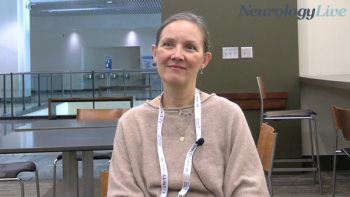
Patient With DMD Dies in Pfizer’s Phase 2 Gene Therapy Trial
In response to the death, Pfizer is pausing dosing associated with the crossover portion of the phase 3 CIFFREO trial.
A patient with Duchenne muscular dystrophy (DMD) has died in Pfizer’s phase 2 DAYLIGHT study (NCT05429372) of
“We do not yet have complete information and are actively working with the trial site investigator to understand what happened. The patient received the investigational gene therapy, fordadistrogene movaparvovec, in early 2023,” Pfizer wrote in its letter to Parent Project Muscular Dystrophy. The letter noted that the participant had “passed away suddenly”.1
In response to the death, Pfizer is pausing dosing associated with the crossover portion of the phase 3 CIFFREO trial (NCT04281485) currently evaluating the gene therapy against standard of care in boys with DMD aged 4 to less than 8 years. DAYLIGHT’s participants are aged 2 to less than 4 years.
The dosing pause does not apply to other studies evaluating fordadistrogene movaparvovec as dosing has been completed in those studies.
READ MORE:
“The safety and well-being of the patients in our clinical trials remains our top priority, and we are committed to sharing more information with the medical and patient community as soon as we can,” the letter stated.1 “We are also aware that many in the patient community are hopeful about the potential benefit of fordadistrogene movaparvovec for the treatment of DMD, and we will continue to collect data from our trials to evaluate its ability to address this disease.”
The most recent, 3-year follow-up data on fordadistrogene movaparvovec from a
The data were from 16 ambulatory male patients with DMD that received the high dose of 2E14 vg/kg intravenous fordadistrogene movaparvovec. These participants had a mean age of 8.5 years (standard deviation [SD], 1.7) and a mean north star ambulatory assessment (NSAA) score of 27.3 (SD, 4.1). Ten patients were aged 8 to 12 years and 6 were aged 6 to 7 years.2
At 3 years of follow-up, NSAA decreased from baseline by a mean of 6.4 (standard error [SE], 2.0) in the investigational arm compared with 7.8 (SE, 0.6) in the predicted natural history model arm for a positive difference of 1.4 (95% CI, -2.8-5.5). Fordadistrogene movaparvovec was associated with a positive difference of 3.8 (95% CI, 2.1-5.6) in the younger group and a difference of -0.1 (95% CI, -5.4-5.2) in the older group.2
Thigh muscle volume improved by 4.1% (SD, 17.0) overall and upper-limb muscle volume improved by 23.6% (SD, 18.8). There was a moderately strong correlation between the change from baseline in NSAA and thigh muscle volume (Spearman correlation = .60). Participants with a positive change from benefit in NSAA had a mean change of 13.5% (SD, 14.4) in thigh muscle volume compared with those who had a negative change from benefit in NSAA, who had a mean change of -0.1% (SD, 17.1) in thigh muscle volume. At the time of data, there had been no new safety signals of concern observed compared with the data at 2 years of follow-up.2
"At 3 years, a clinically meaningful preservation of motor function was observed in participants with DMD aged 6 to <8y receiving fordadistrogene movaparvovec versus an external control. Sustained increases in upper-limb muscle volume were observed. Change from baseline in NSAA was moderately strongly correlated with percent change from baseline in thigh muscle volume," Shieh and colleagues wrote in their abstract.2
REFERENCES
1. Letter. Pfizer. https://www.parentprojectmd.org/wp-content/uploads/2024/05/Pfizer-DMD-PAG-Letter_Final.pdf
2. Shieh P, Butterfield R, Muntoni F, et al. Fordadistrogene movaparvovec for Duchenne muscular dystrophy: 3-year functional outcomes and changes in thigh and upper-limb muscle volume. Presented at: MDA 2024 Meeting. Poster #T431.
Newsletter
Stay at the forefront of cutting-edge science with CGT—your direct line to expert insights, breakthrough data, and real-time coverage of the latest advancements in cell and gene therapy.











































